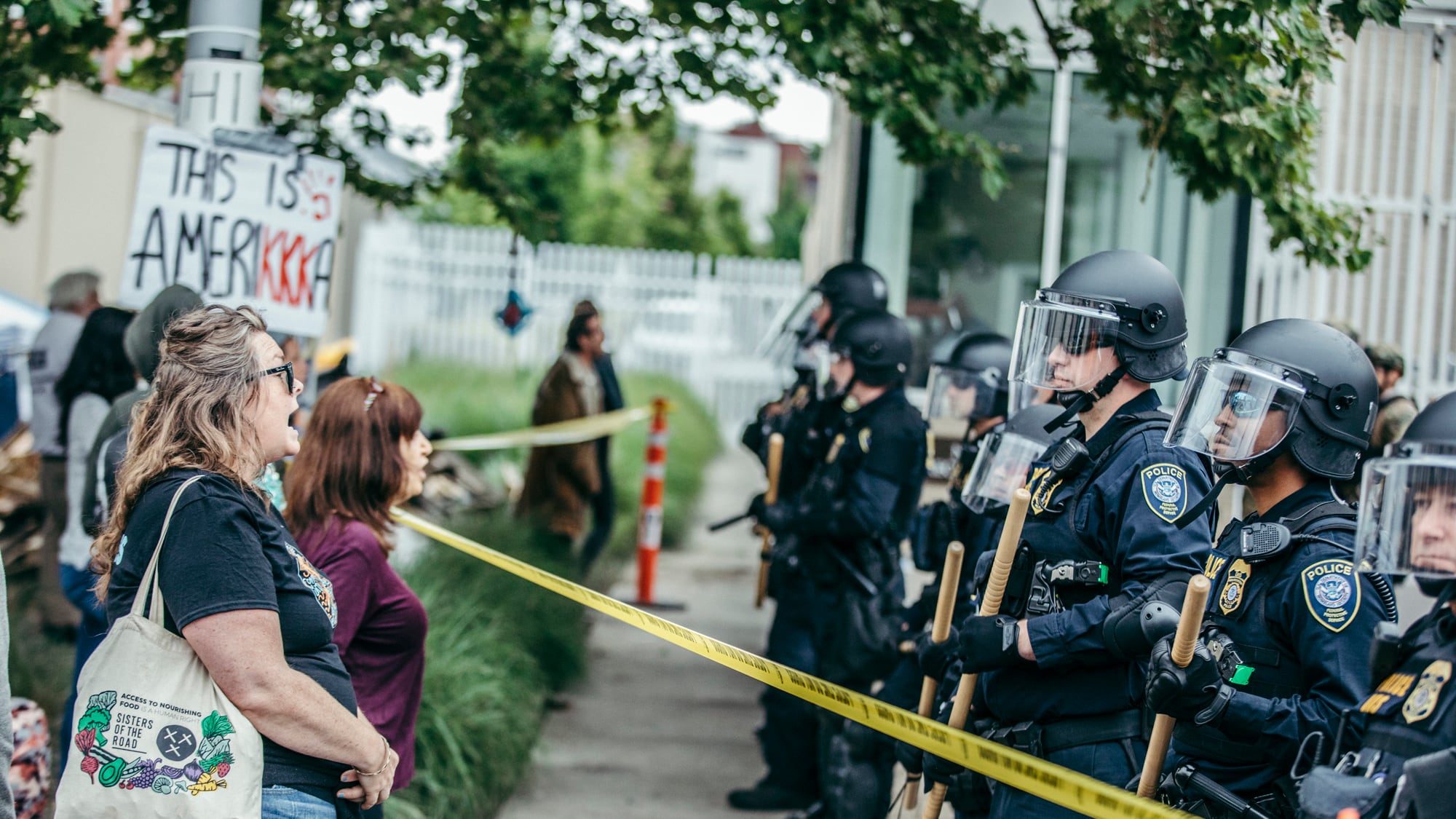The nation's first and most successful occupation of a federal immigration building has entered a stalemate.
The demonstrators at what federal officials characterize as a "very, very peaceful" protest camp outside the U.S. Immigration and Customs Enforcement building on Southwest Macadam Avenue have settled in for the long haul. Federal agents swept protesters away from the ICE building's front entrance June 28, allowing the building to fully reopen July 3.
Now the two organizations—ICE and Occupy ICE—are uneasy neighbors.
Last weekend, small children in the protest camp played with bubbles as their parents crafted protest signs and bopped to dated rock jams near a police line keeping protesters away from the entrance of the federal building. There are no weapons permitted inside the nonviolent camp. Young boys made cardboard shields Saturday afternoon, but their parents wouldn't let them make cardboard swords.

The occupiers have built a well-stocked kitchen, started collections to fund new portable toilets, and have organized onsite child care. A 6-foot-tall wooden barricade protecting the camp from the street was reinforced as recently as Saturday evening.
On the other side of the police line, the Department of Homeland Security has built a barricade of its own. Federal police erected a tall chain-link fence around the ICE building July 2.
As ICE resumes its normal operations this week, it's unclear which side will act next. But the protest camp has infrastructure in place to continue for weeks, maybe longer. Here's what is there.

Inside the Occupy ICE Camp
1. Entrance to ICE: The front doors to the ICE building had been blocked by protesters, but DHS cleared the camp June 28 to "secure" federal property.
2. Police Line: Federal officers set up a cordon June 28 at the edge of the ICE building, extending to the street, to keep protesters away from the entrance and driveway. The officers now gather mostly in clumps, and have installed a fence.
3. The Protest Stage: Protesters, many of whom were mothers, children and college students on a quiet Saturday afternoon, line a grassy area just in front of the police line. They have been urged not to talk to the DHS officers standing nearby.
4. Camp Entrance and Barricade: The camp is protected by a tall, wooden barricade decorated with anti-ICE messages and warnings against talking to the police.
5. Kitchen: A well-stocked, help-yourself-style kitchen is feeding occupiers fruit, bread and energy bars.
6. Medical Tent: It's stocked with ibuprofen, moleskin and sunblock.
7. Finance and Operations: Running a long-lasting protest camp costs money—the camp needs to replace portable toilets and buy food, water and medical supplies, among other things.
8. Tents: Protesters who want to sleep overnight to keep DHS from clearing the camp stay in at least 90 tents that line either side of a path.
9. Media Tents: Independent radio station KBOO and nonprofit newspaper Street Roots have tents set up in the camp marked with signs displaying their logos.
10. Kids' Space: The occupation includes several families. The camp has set up a designated tent filled with toys, games and books for children to enjoy.
11. Topside Camp: The occupation's second front, Topside is just a few tents at the edge of the ICE building on Macadam Avenue, with another collection of wooden barricades.
12. Lookout: An armed federal officer is usually stationed on the roof of the ICE building. Occupiers complain the rooftop cops sometimes blast Metallica.

